Business.com aims to help business owners make informed decisions to support and grow their companies. We research and recommend products and services suitable for various business types, investing thousands of hours each year in this process.
As a business, we need to generate revenue to sustain our content. We have financial relationships with some companies we cover, earning commissions when readers purchase from our partners or share information about their needs. These relationships do not dictate our advice and recommendations. Our editorial team independently evaluates and recommends products and services based on their research and expertise. Learn more about our process and partners here.
15 Creative Business Sign Ideas That Will Attract More Customers to Your Store
From outdoor signage to indoor displays, these creative designs and approaches are sure to capture attention.

Table of Contents
For brick-and-mortar stores, signage is one of the simplest and most effective retail marketing strategies. From outdoor signs that catch the eyes of passersby to in-store posters that highlight can’t-miss deals, the right signage can attract customers, boost sales and keep your brand top of mind.
We’ll share creative interior and exterior business sign ideas, along with expert tips to help your signage stand out from the crowd.
What are some creative business sign ideas to attract customers?
Here are five creative business sign ideas that can showcase your brand’s unique personality and help you stand out from the competition.
Slogan-based (rather than business name) signs
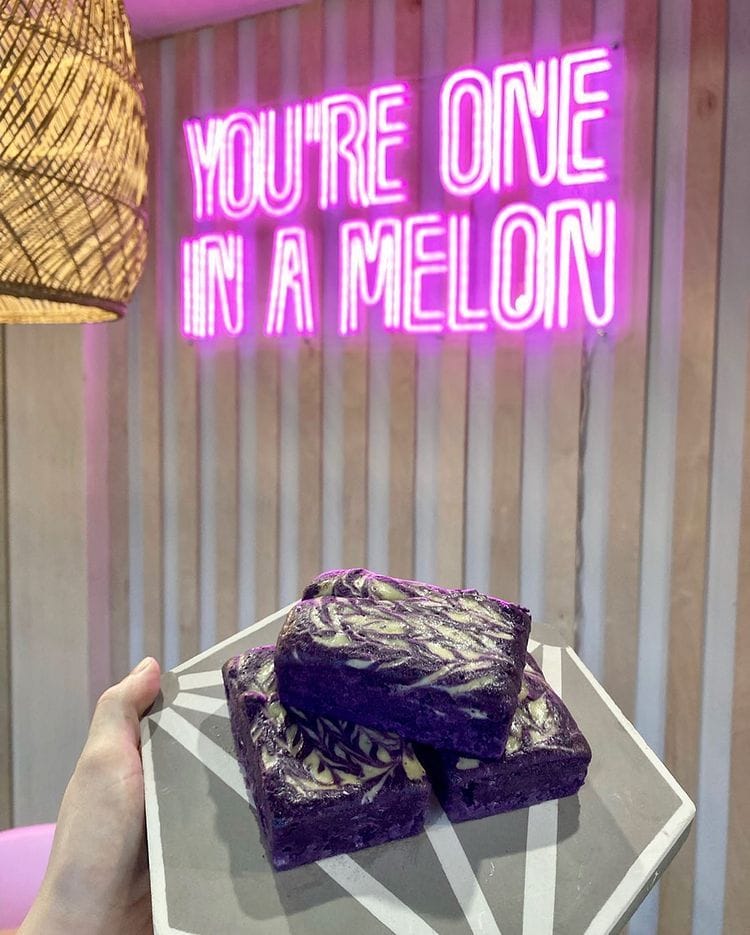
Show off your brand’s personality with witty signage that uses a catchy slogan instead of your business name — as long as it still connects clearly to your company’s purpose.
“We are seeing more and more businesses using catchy or enticing slogans rather than business names, as they capture attention, create talking points and are remembered,” explained Clare Jones, outreach manager for Custom Neon.
Icon-integrated logo sign
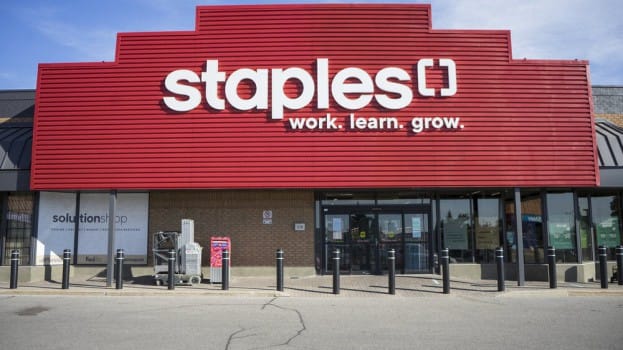
Icon-integrated logo signs add a memorable spin to your branding by transforming a letter or symbol into a visual element that ties to your product or service.
“Replace a letter in the business name with a distinctive design element … [like a] geometric shape or other stylized design that reflects the brand,” said Elizabeth Milian, co-founder and brand protection attorney at The Milian Legal Group.
Suspended ceiling signs
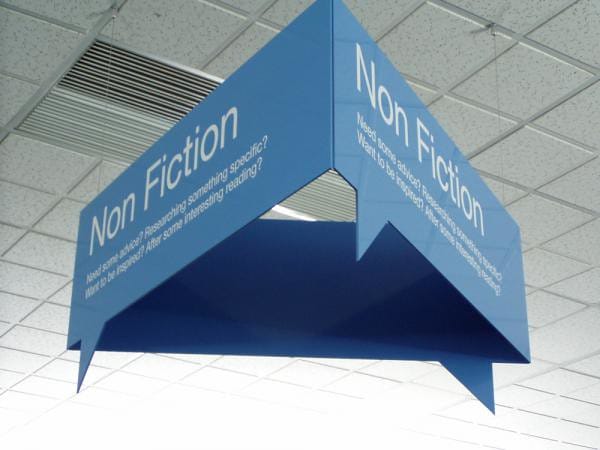
Suspended ceiling signs are ideal for tight spaces. They can improve store aesthetics while guiding foot traffic more effectively, streamlining the customer experience.
“A sign doesn’t have to be massive to be impactful,” Jones said. “Evocative language, striking imagery and illumination work wonders.”
Digital signage for real-time messaging
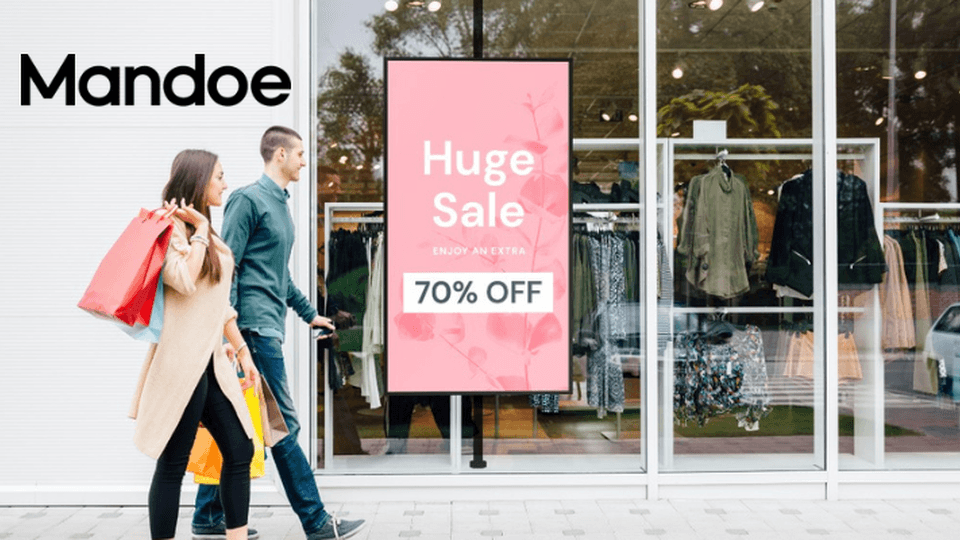
Digital signage lets you share timely updates and build customer loyalty. These displays can influence buying decisions, especially among younger shoppers. In fact, research from Mood Media shows 36 percent of shoppers under 40 have made a purchase directly because of digital signage.
“Small businesses that use simple, easily updatable digital screens to show real-time promotions or inventory updates can grab attention in a way that feels helpful, not just flashy,” said Jaime Bettencourt, senior VP of global account management and marketing at Mood Media.
Marquee signs with personality

A witty, shareable marquee message can differentiate a business and spread the word organically — and El Arroyo’s success is proof.
“[El Arroyo’s] brand has exploded over the last decade because of [their signage],” said Sam Littlefield, president and CEO of Littlefield Agency. “The funny thing is, half of it isn’t even about the food they provide. It emotionally relates to the internet consumer.”
What are some unique storefront sign ideas for small businesses?
Your storefront is one of your most valuable marketing tools, offering plenty of room for creativity. Here are some ideas to help you transform it into a standout platform that draws customers in.
Blade signs for side-street visibility

Roadside businesses competing for the attention of passersby can boost visibility with blade signs, which extend beyond the storefront and face oncoming traffic.
“If the storefront is adjacent to the street, then the goal is to capture visibility from oncoming traffic,” explained Gus Neri, director of branding at DyeLot. “This could require the inclusion of a projecting sign or blade sign, which can face the messaging perpendicular to the street.”
Custom window decals with visual effects
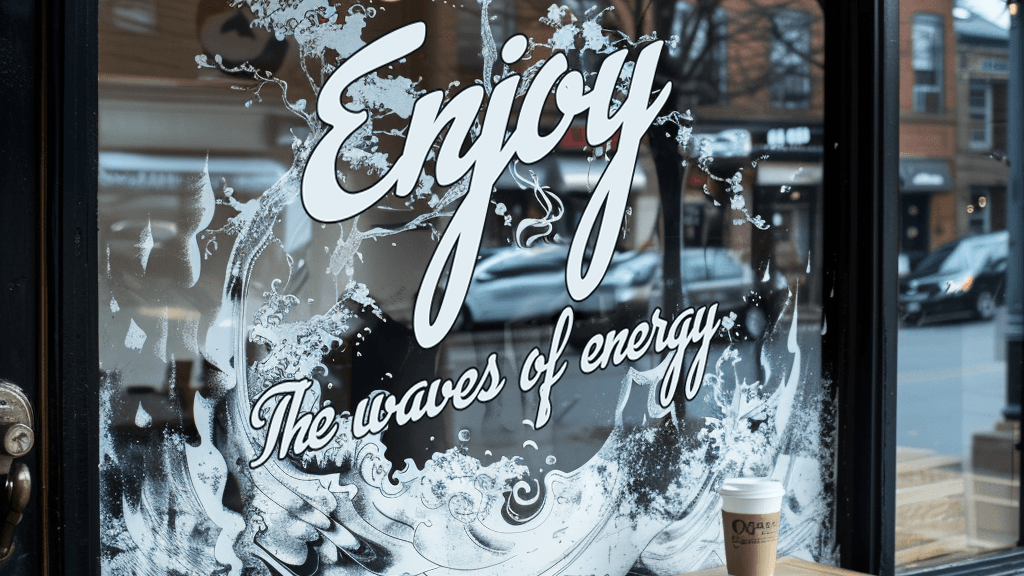
Using unexpected design elements can transform your windows into unique, brand-driven displays.
“We’ve observed brands effectively [using] assets like window clings and decals in unexpected ways, such as bandage graphics on the walls or windows of a pharmacy, or wave clings on sliding doors to simulate motion,” said Meredith Bong, senior account director at RR Donnelley (RRD), a firm that offers marketing, packaging, print and supply chain solutions.
Gallery-style signage with personal storytelling
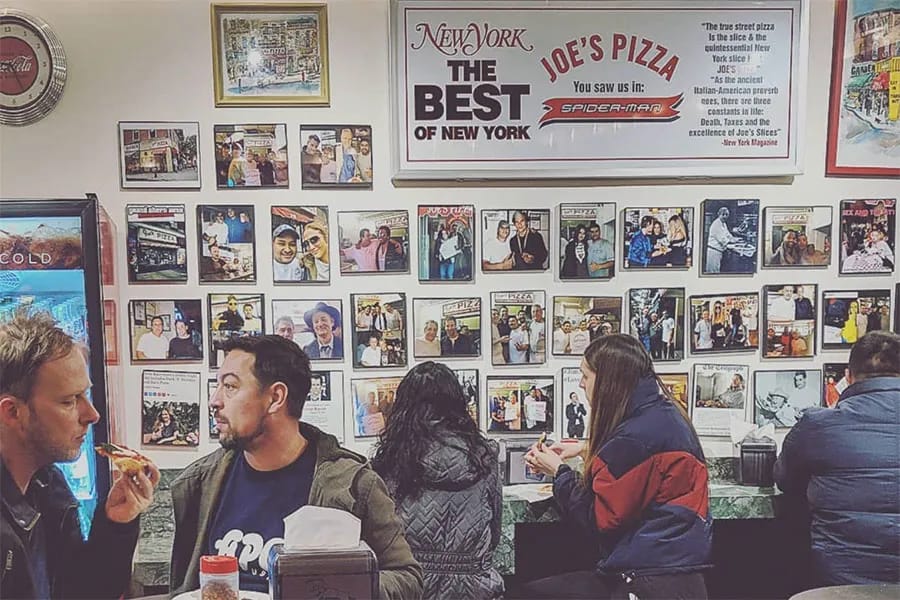
Your storefront can tell a story through a collection of photos or pieces that are special to your business. This creates an emotional connection with customers while highlighting your values and history.
“We created a sign for a family-owned Italian restaurant,” Jones shared. “On the wall, amongst beautiful photographs of generations, there was an illuminated sign, ‘From our family to yours with love,’ which perfectly encapsulates their love of bringing families together with food and wine.”
Architectural-integrated signage
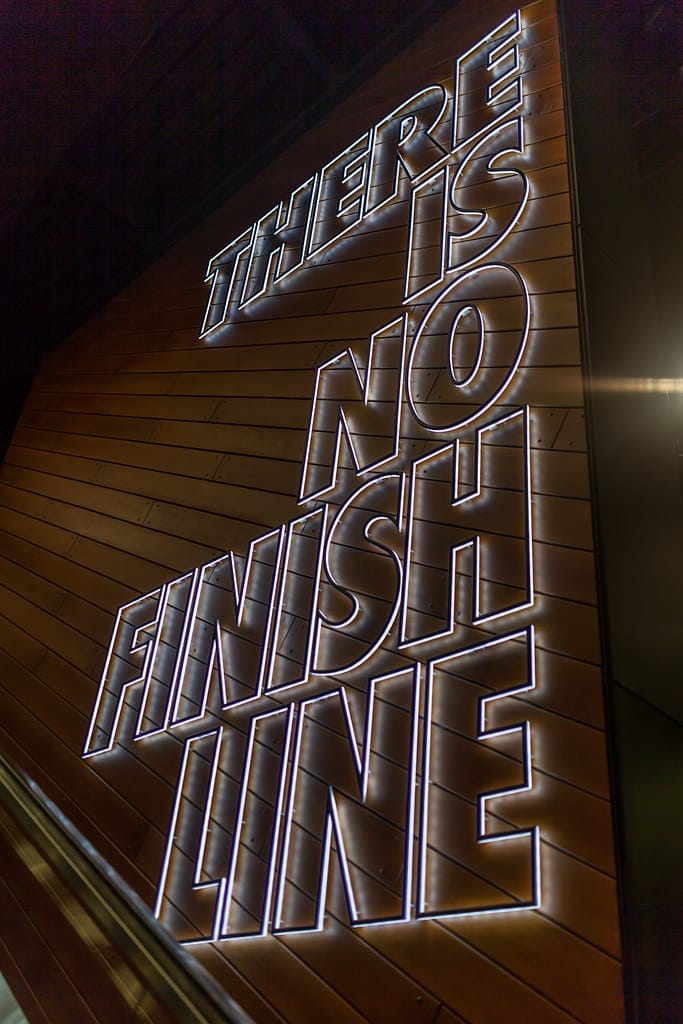
Incorporating signage into the architecture of the business enables it to embrace its storefront’s design and reinforce its distinctive elements, creating a cohesive visual identity.
“Signs which highlight the prevailing textures, rhythms and conditions of the building … complete the picture of the business, offering a level of intention and dedication that is crucial in a competitive market,” Neri said.
Handcrafted dimensional signs
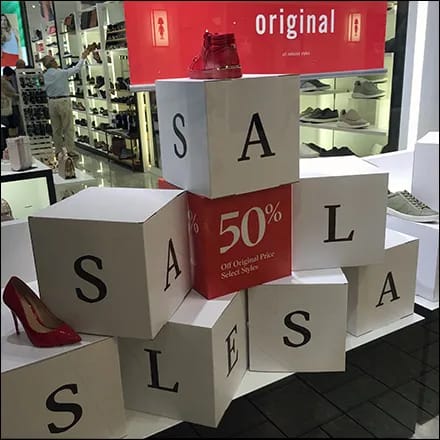
Convey your message with three-dimensional, handcrafted signs like stand-up displays or shelf signage. These elements can transform an ordinary storefront into an immersive experience.
“Indoor signage can … [create] an elevated shopping environment,” Bong said. “With the right materials, you can achieve … signage that can be disruptive and informative.”
What are effective outdoor sign options for retail stores?
Whether your business is located on a busy road or in a walkable neighborhood, outdoor signage is key to boosting curb appeal and drawing in new customers. Here are some effective options to consider.
Backlit signs for 24/7 visibility

Whether it’s nighttime, snow-covered or rainy, backlit signs offer a reliable way to guide customers toward your business. Their constant illumination ensures your storefront is visible in any condition, helping you attract attention and stand out from the competition.
“Storefront signage should stop pedestrians in their tracks, but they need scale, contrast and lighting to stand out, especially after dark,” Jones said.
A-frame signs with bold character
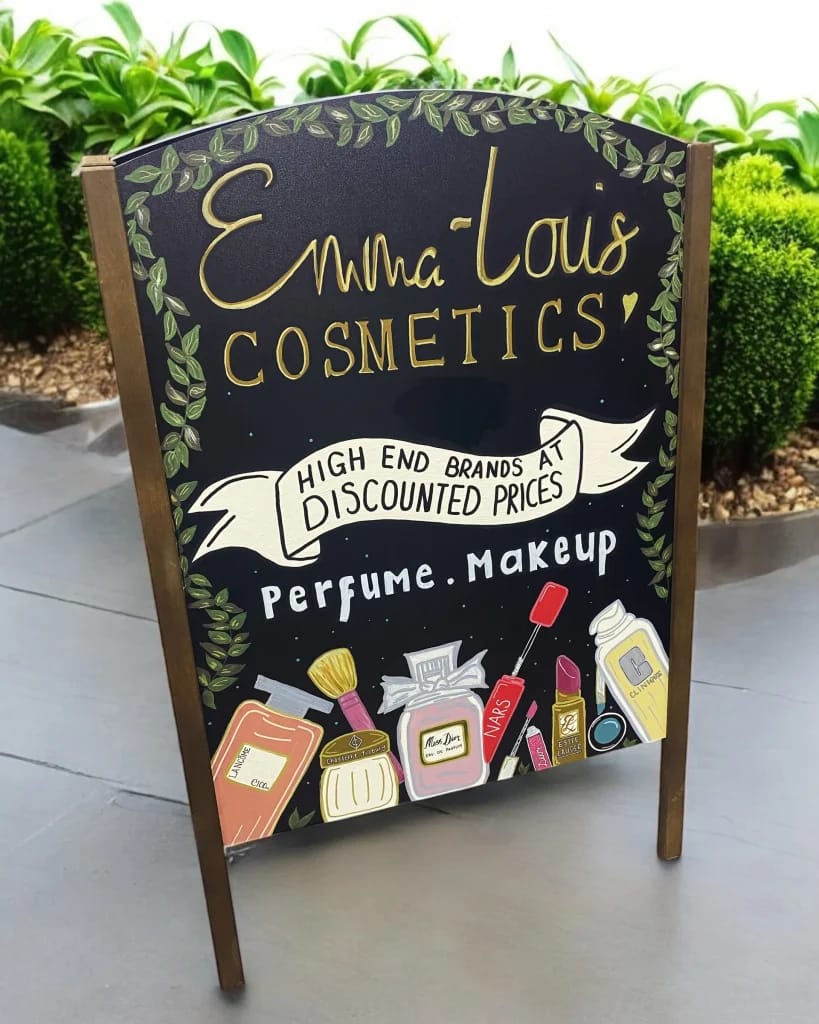
Ideal for shops in walkable areas, hand-painted A-frame signs are a budget-friendly solution for sharing daily messages with your audience and highlighting your company’s personality.
“Consistent fonts and a pop of unexpected color (like deep teal or rust) can signal brand identity without spending big,” noted Dr. Christina Inge, an instructor of marketing courses with Harvard University’s Division of Continuing Education.
Lighted bracket signs for walkable areas
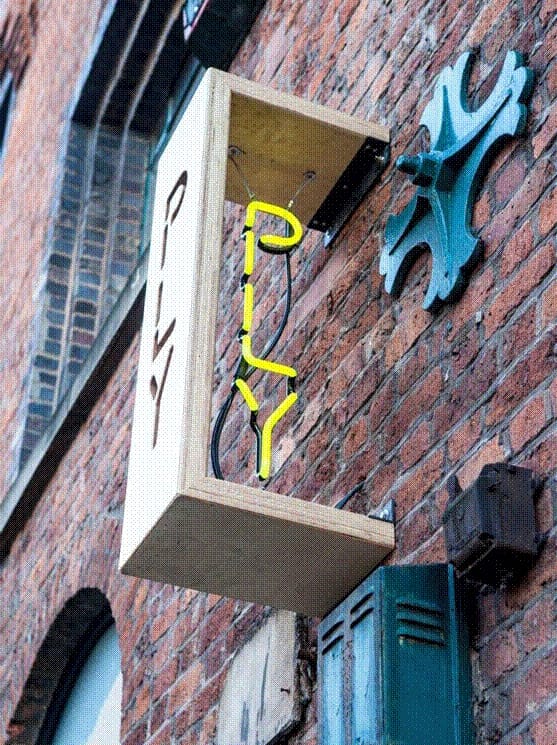
In crowded retail areas like strip malls or dense shopping districts, a lighted bracket sign can help you stand out from surrounding storefronts. Day or night, they increase your visibility and help capture consumers’ attention.
“Lighted brackets are only slightly more expensive than standard ones and, when paired with energy-efficient LED bulbs, they offer maximum visibility at a minimal ongoing cost,” explained Charlie Capps, director of e-commerce for Sign Bracket Store.
Bold typography signs for high-traffic areas

If your business shares signage space, bold typographic choices help ensure your sign stays legible from a distance and stands out in crowded visual environments.
“I drove by a retail shopping center recently with probably 15 brands within the space, [and] there was one brand that was a bold sans-serif font — it immediately caught my attention,” Littlefield recalled.
Floor-level signage to catch distracted shoppers
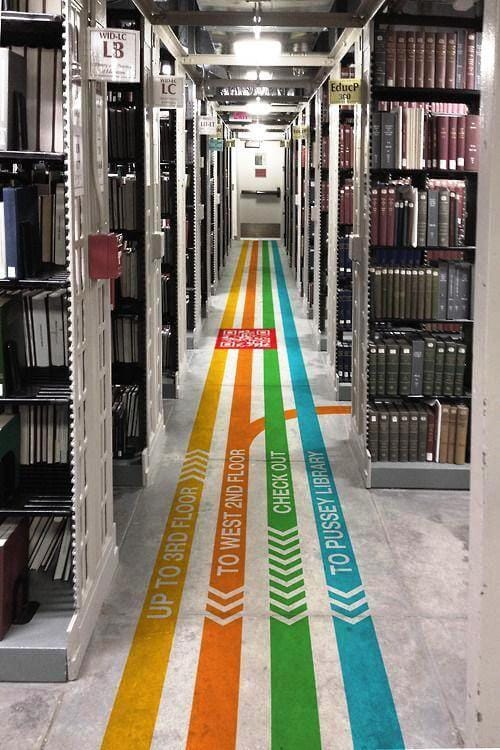
Instead of competing for attention at eye level, floor graphics can capture the gaze of people looking down, whether they’re glancing at their phone or watching their step.
“While everyone is trying to get our attention at eye-level, I’ve found that floor graphics really help guide people to an activation,” said Kateri Foley, director of growth, marketing and sales strategy at Hearthfire Holdings.
How can I make my business signage stand out?
A creative, visually appealing business sign can make a world of difference in your local marketing strategy. The following best practices can help you capture attention, both inside and outside your store, without breaking the bank.
Keep the design simple.
A sign doesn’t need to be complex to make an impression. In fact, simplicity often works better, both for visual impact and budget planning.
“Production costs may be reduced by sticking to a single signature color while also reinforcing brand identity,” Milian advised. “Choosing a clean, streamlined design over an ornate or overly detailed design helps maintain visual impact.”
Pair logos with succinct, memorable slogans.
For enterprise retailers like Target and Starbucks, logos alone are enough to spark instant recognition. Smaller brands, however, may need to go beyond a logo to build stronger customer connections.
“People are drawn to ideas, not logos,” Neri explained. “A succinct phrase paired with [your] logo is an effective way to capture attention and reinforce [your] brand identity.”
Leverage the power of persuasion.
The right words can nudge prospective customers to take action — whether that means stepping inside or making a purchase.
“Persuasive phrases like ‘limited-time offer’ or ‘treat yourself’ can be used to activate emotional triggers and FOMO,” Jones said, noting that many consumers make impulse purchases based on FOMO (fear of missing out) alone.
Bettencourt added that real-time updates or social proof (for example, “This just sold out in our NYC location!”) can also create urgency while reinforcing your brand’s transparency.
Don’t stop at one sign.
Jared Navarre, founder of Keyni Consulting, recommends posting multiple signs in different locations to maximize visibility.
“One sign rarely does the job,” Navarre said. “Would you run one ad and call it a campaign?”
Depending on local codes and your lease terms, Navarre encourages business owners to “go big.”
“Add sidewalk boards, window vinyl, corner brackets — anything that meets the eye. Entrances, exits, side walls — every angle counts,” he added.
Consider the context.
Even the most visually appealing sign won’t translate into more foot traffic and increased sales if it doesn’t resonate with your target audience.
Consider the context of your signage: Who is passing by or shopping in your store right now? What is their goal? How can a sign’s design or content help guide them toward that goal? For example, Bettencourt noted that grocery shoppers often respond positively to recipe inspiration or preparation demos near related items.
“[These signs] can feel like personalized help rather than just ads,” Bettencourt added.
Where can I find inspiration for designing my company’s signage?
Looking to get the creative juices flowing? These sources of inspiration can help.
Your own brand and customers
Start by looking inward: What sets your brand apart in your industry?
“Consider the intersection of brand identity, creativity and legal protection,” Milian advised. “Your style, intended audience and specific offerings can all serve as inspiration points to help you differentiate your signs from competitors.”
If you’re already open for business, Bettencourt recommends observing how shoppers behave in your store.
“Notice where people linger, which aisles spark questions and what prompts them to ask associates for help,” Bettencourt said. “Then, design signage to answer those needs visually.”
Your local community
The community your business belongs to can inspire both design elements and your broader marketing approach. Thoughtful signage not only attracts attention but can also help you build community around your brand.
“Observing how other small businesses are going to market can spark fresh ideas,” Bong said. “Depending on the brand’s identity, drawing from regional nature or local culture can also create a meaningful connection with customers.”
Sign companies
Whether you turn to them for design, printing or hardware and software, sign companies understand the possibilities and limitations of different sign types. Reviewing their design options and work samples — especially for brands with similar styles — can help you see how your vision might translate.
Capps noted that this approach is especially helpful for businesses restricted by sign placement rules. Once you know what’s allowed in terms of size, placement and type, you can layer in eye-catching elements. Capps recommends bold colors, legible lettering and clear graphics to keep signage attractive, effective and compliant.
Top retail brands
According to Bettencourt, looking to top-performing retailers can help inspire your business’s approach to signage.
“Look at grocery and electronics retailers, which lead in digital display effectiveness … They’ve mastered how to use signage as both a sales driver and an information hub,” Bettencourt suggested.
Bettencourt also recommends drawing inspiration from big brands (Nike, for example) that successfully blend brand storytelling with utility. “Even if your budget is smaller, you can adapt their strategy of mixing promotions with lifestyle content that reflects your brand’s personality,” Bettencourt said.
Design media outside of business signage
Researching other businesses’ signs can provide inspiration, but Neri cautions against relying too heavily on what already exists.
“What you find online is going to be another brand’s identity, and it’s likely not going to translate well for a different business and building condition,” Neri said.
Instead, Neri recommends drawing inspiration from design media outside of traditional signage. Sculpture, graphic design, product packaging and even award design can spark ideas for what to include — without directly copying another brand.
“From a legal standpoint, originality is key,” Milian emphasized. “A strong, protectable sign should not only attract attention but also be unique enough to distinguish your business from others in the marketplace.”
